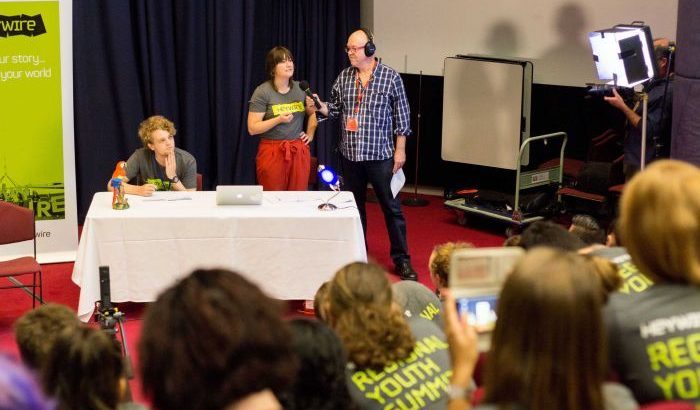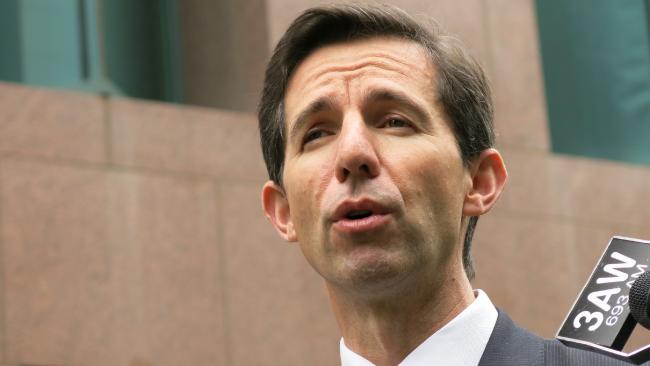Oceanía/Australia/10 de febrero de 2017/Fuente: ei-ie.org
Los educadores han emprendido una campaña para reclamar una financiación sostenible para los centros de educación preescolar, que consideran vitales para el desarrollo de los niños, al proporcionarles las habilidades sociales y educativas que necesitan para obtener unos buenos resultados escolares.
El 3 de febrero, el sindicato de la educación de Australia (AEU), una organización nacional afiliada a la Internacional de la Educación, lanzó su campaña “Protejamos nuestras escuelas preescolares” para pedir al gobierno federal que garantice una financiación continua para los centros de educación preescolar y ponga fin a la incertidumbre con la que se enfrentan los padres y el personal de la educación.
A pesar de que más del 95% de los niños de cuatro años de Australia estén matriculados en un programa de educación preescolar de 15 horas semanales financiado por el gobierno, este programa está amenazado por parte de las autoridades públicas que no garantizarán su participación en la financiación más allá de 2017. Esto ha impedido que los centros preescolares puedan hacer planes para el futuro, lo cual pone en peligro los puestos de trabajo de los educadores.
Ejercer presión sobre las autoridades públicas
Todos los niños merecen tener acceso a una educación preescolar de calidad que les ayude a prepararse para la escuela, dijo la presidenta federal de AEU, Correna Haythorpe. La nueva campaña del sindicato promoverá el valor de la educación preescolar y aumentará la presión ejercida sobre el gobierno federal para que proporcione una financiación a largo plazo.
“El ministro de educación, Simon Birmingham, ha defendido reiteradamente los beneficios de la educación preescolar; debe hacer algo más que hablar, debe dar a los centros preescolares la financiación que sin duda necesitan”, subrayó.
AEU, sus miembros y sus simpatizantes ya han llevado a cabo campañas exitosas en dos ocasiones para que se ampliara la financiación de la educación preescolar, dijo. “La prórrogas a corto plazo no son suficientes; nuestros hijos merecen que se garantice el acceso a la educación preescolar de calidad y los educadores merecen tener seguridad con respecto a su futuro”.
La mejor preparación preescolar y de calidad para un aprendizaje a lo largo de la vida
Haythorpe hizo hincapié en que la investigación demuestra que una educación preescolar de calidad constituye la mejor preparación para una vida de aprendizaje, porque da un impulso a la preparación para la escuela y mejora los resultados a largo plazo.
Preguntó por qué el gobierno federal podía considerar la posibilidad de recortar la financiación de los programas que ofrecen enormes beneficios a los niños. Todos los niños merecen tener un buen comienzo en su aprendizaje y un acceso a 15 horas a la semana de educación preescolar, impartida por un docente que cuente con una formación universitaria, dijo Haythorpe.
Rezagados en materia de financiación
Esta campaña ofrece a los padres y a los educadores la oportunidad de decir al gobierno de Turnbull que todos los niños merecen 15 horas de educación preescolar.
Australia ya invierte mucho menos en la educación de la primera infancia que la media de los países de la Organización para la Cooperación y el Desarrollo Económicos (OCDE). Su financiación nacional representa solo el 0,5% del producto interno bruto (PIB) en comparación con el promedio de los países de la OCDE que es del 0,8%, dijo Haythorpe, y agregó que “esto supone hacer caso omiso de las investigaciones que consideran que los programas preescolares constituyen una manera rentable de mejorar el rendimiento escolar”
Fuente: https://www.ei-ie.org/spa/news/news_details/4274
Imagen: https://www.ei-ie.org/kroppr/eikropped/Australia_AEU_ECE_Preschool_148646625014864662509453.jpg















 Users Today : 2
Users Today : 2 Total Users : 35460211
Total Users : 35460211 Views Today : 3
Views Today : 3 Total views : 3418898
Total views : 3418898